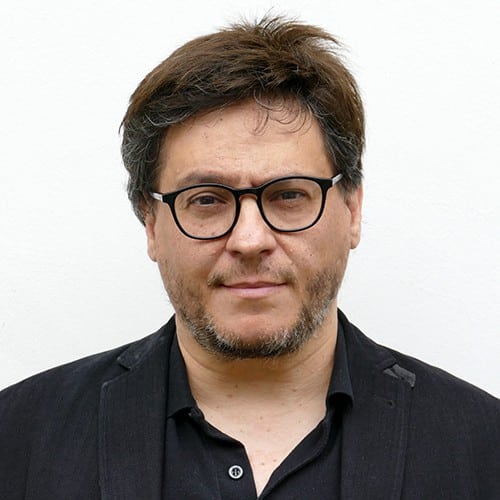NEW IDEAS IN COMPLEXITY SCIENCE
On May 24th, 2018, the First External Faculty Meeting of the Hub started with a public conference.
In short talks complexity scientists from all around globe shared their visions on the question “Complexity: Where do we go from here?”
What are the open, the most pressing, the most promising questions to an understanding of complexity and Big Data?
Find the talks of all conference participants (in order of appearance) on our Youtube channel in the playlist of the conference.
An overview with photographs of the event and links to all available slides can be found here.
RICARD SOLÉ
“PRESERVE EXACTLY WHAT WE HAVE—OR SURVIVE”
Ricard Solé is ICREA research professor at the Catalan Institute for research and advanced studies, currently working at the Universitat Pompeu Fabra, Spain, where he is the head of the Complex Systems Lab. His presentation looks at the possibilities of synthetic biology if used to engineer ecosystems and avoid the worst effects of climate change, and addresses the fears surrounding the use of the technology.
Some geologists are calling the present epoch the Anthropocene, due to the impact humans are having on the global environment. One of the major impacts of the resulting climate change, Ricard says, is tipping points, where an ecosystem changes to a point where it cannot recover. His lab focuses on semi-arid environments, which cover 30 percent of the planet and are home to 30 percent of people. All models show that these regions will face tipping points fairly soon. “How can we prevent this?” Ricard asks.
One option could be geoengineering. Ricard points out that people who promote such technologies are largely concerned with “cooling the planet” rather than removing CO2. Ricard suggests instead bioengineering the planet with synthetic organisms to reverse or mitigate the worst effects.
A synthetic microorganism should spread on a given scale, restore the damaged part of the ecosystem, and ideally die once it has completed its task. One example Ricard gives is a microorganism taken from a semi-arid environment, engineered to produce a moisture-retaining polymer and re-released.
Ricard emphasizes that while many fear a Jurassic Park-style catastrophe, in fact, successful artificial ecosystems already exist. One example is Ascension Island, a remote place somewhere in Southern Atlantic where Charles Darwin and Joseph Hooker imported large numbers of non-indigenous plants to make it more habitable. “The question we must ask,” Ricard says, “is whether to preserve exactly what we have, or survive.”
CLICK FOR RICARD’S SLIDES.
See the video in full lenght here:
About the study
The study “XY,” by XY and XY, was published in XY.

